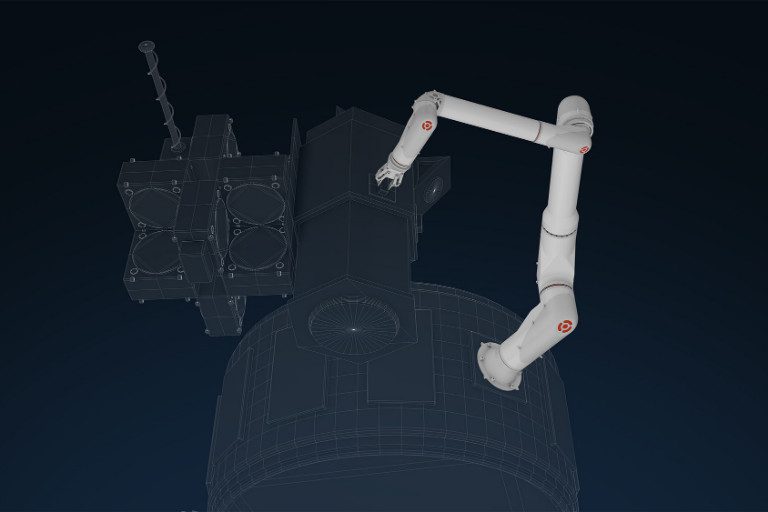The Newest Space Race – Space Logistics
While we’ve been watching billionaires launch space crafts of their own, another space race has been taking place – space logistics. This race is being led by a community of scientists, engineers, and agencies, as well as aerospace and robotics companies.
Space logistics is the practice of driving space system design for operability. This means everything from design and development, storage, movement, maintenance, disposal and more. Most recently, space logistics has taken the shape of robotic space crafts. Northrop Grumman recently launched a satellite life extension craft (Mission Extension Vehicle or MEV-1). In February 2021, MEV-1 successfully performed an in-orbit service check and fuel-up with Intelsat, a non-transmitting satellite. MEV-2 has also docked to a telecommunications satellite (the Intelsat 10-02) to refill propellant.
Engineers at NASA’s Goddard Space Flight Center are working on a spacecraft called the OSAM-1 that would rehabilitate government satellites that would otherwise go out of service. Pasadena-based Motiv Space Systems, which developed a seven-foot-long, robotic arm used by the Mars Rover, recently built a brand new modular robotic arm system, xLink. The xLink system is built for a wide range of on-orbit tasks, from positioning and connecting modules and equipment to deploying large-scale payload elements. In the next generation of space travel, the xLink will play a pivotal role in the capture and servicing of satellites, helping to extend their mission life – without any astronauts.
Automated satellite repair, orbital tow trucking, interstellar fueling stations, space junk removal, and more are all areas in the space logistics industry that are being developed at the speed of light (or close to it). These unmanned spacecraft – complete with robotic arms – are slated to be used to prolong satellite lifespans and reduce future space clutter. Both Europe and Japan are placing a priority on developing technologies that will address the growing issue.
“An international community is realizing that commerce can be generated in space via a spectrum of activities,” said Tom McCarthy, co-founder and head of business development at Motiv. “Most of the profitable opportunities currently include life extension of well-performing spacecraft by means of augmented propulsion services or refueling, space tugs for repositioning, and eventually assembly and manufacturing on-orbit.”
Currently, more than 20,000 known and tracked pieces of space debris are orbiting Earth. These pieces of debris pose a risk to future space missions since no one is cleaning it up. In addition, there are more than 6,542 satellites currently orbiting the earth, with more than half needing to be fixed or de-orbited. But this is where space logistics comes in. “What’s so exciting is that here you have an entire ecosystem springing up around satellite servicing and repair with all sorts of new technologies being applied,” said McCarthy.
It would seem (with numbers like that) that space logistics has a viable future if for no other reason than the liabilities on the table each time a government or company launches anything into orbit, McCarthy explained. “Any activity which involves the engagement and adjustment of any material on-orbit requires careful coordination within the space community to ensure safe operations,” McCarthy stated. “In addition, a well-developed execution plan needs to exist to ensure that materials to be re-entered into Earth’s atmosphere are done in a safe and predictable manner.”
Motiv has plans to continue its work to support the space logistics race. As space travel and exploration continue to grow, so will space logistics and the innovations of Motiv. Onwards!
